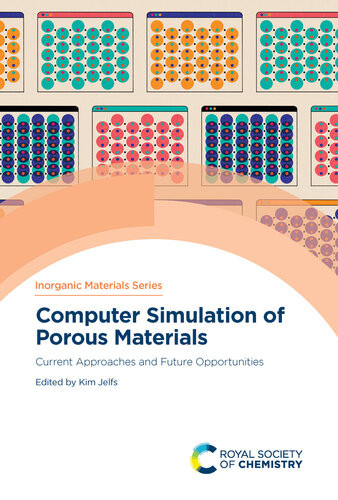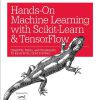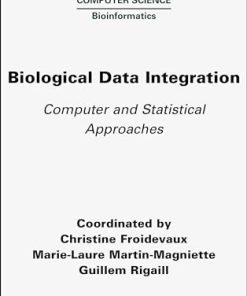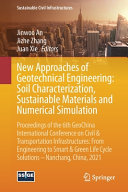Computer Simulation of Porous Materials Current Approaches and Future Opportunities 1st Edition by Kim Jelfs ISBN 9781788019002 1788019008
$50.00 Original price was: $50.00.$25.00Current price is: $25.00.
Computer Simulation of Porous Materials Current Approaches and Future Opportunities 1st Edition by Kim Jelfs – Ebook PDF Instant Download/Delivery: 9781788019002 ,1788019008
Full download Computer Simulation of Porous Materials Current Approaches and Future Opportunities 1st Edition after payment

Product details:
ISBN 10: 1788019008
ISBN 13: 9781788019002
Author: Kim Jelfs
Computer Simulation of Porous Materials Current Approaches and Future Opportunities 1st Edition Table of contents:
Chapter 1 Introduction to Computational Modelling of Microporous Materials
1.1 Introducing Porous Materials Modelling
1.2 An Overview of Microporous Material Classes
1.2.1 Zeolites
1.2.2 Metal–Organic Frameworks (MOFs)
1.2.3 Covalent Organic Frameworks (COFs)
1.2.4 Porous Polymer Networks
1.2.5 Porous Molecular Materials
1.3 An Overview of Modelling Approaches
1.3.1 Structural Characterisation
1.3.2 Role of Flexibility in Porous Materials
1.3.3 Molecular Mechanics
1.3.4 Electronic Structure Methods
1.3.5 Molecular Dynamics
1.3.6 Enhanced Sampling
1.3.7 Grand Canonical Monte Carlo Simulations
1.3.8 Machine Learning (ML)
1.4 Summary
References
Chapter 2 Structure Prediction of Porous Materials
2.1 Why Predict Structures of Porous Materials?
2.1.1 Building Blocks
2.1.2 Bottom-up Approaches
2.1.3 Top-down Approaches
2.2 Structure Generation of Crystalline Network Materials
2.2.1 Software
2.2.2 From a Net to a Crystal Structure
2.2.3 Structure Generation of Zeolites
2.3 Structure Generation of Molecular Materials
2.3.1 Software
2.3.2 Solid-state Structure
2.4 Structure Generation of Amorphous Materials
2.4.1 Software
2.5 Conclusions and Future Perspectives
References
Chapter 3 Atomistic Simulations of Mechanical Properties
3.1 Introduction
3.2 Fundamental Mechanical Properties
3.2.1 Complete Elastic Properties
3.2.2 Young’s Modulus
3.2.3 Linear Compressibility
3.2.4 Poisson’s Ratio
3.2.5 Shear Modulus
3.2.6 Averaging Schemes for Elastic Moduli
3.2.7 Anisotropy of Mechanical Properties
3.2.8 Beyond the Elastic Regime
3.3 Simulation Approaches
3.3.1 Static Methods
3.3.2 Dynamic Methods
3.3.3 Abstract Methods
3.4 Applications of Mechanical Properties
3.4.1 Understanding Mechanical Stability or Instability
3.4.2 Mechanical Surprises
3.5 Summary
Abbreviations
References
Chapter 4 Modelling Sorption and Diffusion Behaviour in Porous Solids
4.1 Introduction
4.2 Molecular Simulations of Adsorption Behaviour
4.2.1 Basics of the Grand Canonical Monte Carlo Method
4.2.2 Brief Overview of Classical Force-fields
4.2.3 Atomic Partial Charge Calculation
4.2.4 Enhanced Sampling Monte Carlo Techniques
4.3 Computational Approaches for Characterising the Structural Properties of Porous Solids
4.3.1 Surface Area
4.3.2 Pore Volume and Size Distribution
4.3.3 Pore Connectivity and Analysis of Topological Features
4.4 Classical Molecular Simulations for Adsorption-based Applications
4.4.1 H2 Gas Storage
4.4.2 Natural Gas Storage
4.4.3 Gas Separation
4.4.4 High-throughput Screening Studies
4.4.5 Challenges and Limitations of Using General Force-fields
4.5 Transport Properties of Gas and Flexibility of Porous Structures
4.5.1 Modelling Guest Diffusion Using Molecular Dynamics
4.5.2 Impact of Framework Flexibility on Guest Diffusion
4.5.3 Modelling Gas Permeability in Porous Membranes
4.6 Summary and Outlook
References
Chapter 5 Spectroscopic and Catalytic Properties
5.1 Introduction
5.2 Spectroscopy, Band Gap, and Magnetism
5.2.1 Vibrational Spectroscopy
5.2.2 UV–visible Spectroscopy
5.2.3 Band Gap
5.2.4 Magnetism
5.3 Catalysis
5.3.1 Condensation Reactions
5.3.2 Hydrolysis of Nerve Agents
5.3.3 Dimerisation of Ethylene
5.3.4 Oxidation of Alkanes
5.3.5 Oxidation of Alkenes
5.3.6 Others
5.3.7 Electrocatalysis
5.4 Conclusions and Perspectives
Abbreviations
References
Chapter 6 Machine Learning in Porous Materials
6.1 Introduction
6.2 General Machine Learning Methods
6.2.1 Overview of Common Machine Learning Algorithms
6.2.2 Practical Considerations
6.2.3 Model Evaluation
6.3 Rationale for Machine Learning in Porous Materials
6.3.1 Defining Characteristics of Porous Materials
6.3.2 Applications of ML in Porous Materials
6.4 Applications of ML to Porous Materials
6.4.1 Model Framing
6.4.2 ML-based Prediction in Porous Materials
6.5 Outlook
References
Subject Index
People also search for Computer Simulation of Porous Materials Current Approaches and Future Opportunities 1st Edition:
material computation
computing material
porous media simulation
materials science simulation software
introduction to computer simulation
Tags: Kim Jelfs, Computer Simulation, Porous Materials, Current Approaches, Future Opportunities
You may also like…
Engineering
Antimicrobial Materials for Biomedical Applications (ISSN) 1st Edition Konda Reddy Kunduru (Editor)
Uncategorized
Biology and other natural sciences - Biotechnology
Biological Data Integration: Computer and Statistical Approaches 1st Edition Christine Froidevaux
Technique - Energy: Renewable Energy
Seawater Batteries Principles Materials and Technology 1st Edition Youngsik Kim
Technique - Food Manufacturing
Business & Economics - Others
International Sport Business current issues future directions 1st Edition Hans Westerbeek
Medicine - Oncology
Cancer Diagnostics and Therapeutics Current Trends Challenges and Future Perspectives S.K. Basu











